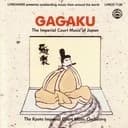Historical Origins and Cultural Significance
The In scale (also known as the "In-sen" scale) has its roots in traditional Japanese court music (gagaku) and folk traditions dating back over a thousand years. This pentatonic scale emerged from the broader Japanese musical system that categorized scales into distinct modes, each serving specific ceremonial, spiritual, or artistic purposes. The term "In" itself refers to one of the fundamental scale types in Japanese music theory, alongside Yo scales which create a brighter, more major-like sound.
Traditional Japanese instruments such as the koto (13-string zither), shakuhachi (bamboo flute), and shamisen (three-stringed lute) frequently employ the In scale to evoke contemplative moods and spiritual atmospheres. The scale's interval structure—featuring a characteristic minor second between the root and second degree (C to D♭)—creates an immediate sense of Eastern musical identity that distinguishes it from Western pentatonic systems. This half-step movement, combined with the perfect fourth leap to F, establishes the scale's signature sound that resonates through centuries of Japanese musical tradition.
Musical Character and Emotional Expression
The C In scale produces a distinctive sonic character that balances melancholy with serenity, creating an atmosphere that feels simultaneously introspective and spacious. Unlike the C Minor Pentatonic scale commonly used in Western blues and rock music, the In scale's unique interval formula (1-4-2-1-4 semitones) generates a sound that feels less grounded in traditional Western harmony and more aligned with modal, meditative expression.
The emotional quality of the In scale stems from its avoidance of the perfect fifth relationship between consecutive notes that defines much of Western music. Instead, the scale emphasizes the haunting minor second (C-D♭), the open perfect fourth (D♭-F), and the perfect fifth from the root (C-G), creating a tonal landscape that feels both ancient and timeless. This differs significantly from C Hirajoshi, which shares some notes but arranges them with different intervallic relationships, resulting in a darker, more mysterious sound.
Musicians often describe the In scale as evoking images of zen gardens, morning mist over mountains, or the gentle flow of water—natural imagery deeply connected to Japanese aesthetics and philosophy. The scale's ability to convey peace without sentimentality makes it particularly effective for creating contemplative musical moments that encourage reflection and mindfulness.
Practical Applications in Modern Music
Contemporary composers have embraced the C In scale across diverse musical genres, from film scoring to video game soundtracks and ambient electronic music. The scale's instantly recognizable Japanese character makes it a popular choice for establishing cultural context in media, appearing prominently in anime soundtracks, samurai film scores, and games set in feudal Japan. Composers like Joe Hisaishi and Nobuo Uematsu have utilized scales from this family to create memorable, culturally resonant themes.
For improvisation and composition, the In scale offers unique melodic possibilities that break free from conventional Western patterns. Guitarists and pianists can use the scale to create exotic melodic lines over drone notes, particularly effective when sustaining the root note (C) or perfect fifth (G) as a pedal tone. The scale works beautifully in modal contexts where traditional chord progressions are replaced with sustained harmonies or two-chord vamps, allowing the melodic intervals to define the musical character.
Jazz musicians exploring world music influences have incorporated the In scale alongside C Kumoi and C Iwato to add Eastern colors to their improvisations. The scale can be particularly effective when transitioning between different Japanese pentatonic modes, creating sophisticated melodic development that honors traditional approaches while exploring contemporary harmonic contexts. Electronic producers have also discovered the scale's meditative qualities, using it to build ambient textures and downtempo compositions that evoke tranquility and mindfulness.
Learning Tips and Comparison to Related Scales
When first learning the C In scale, focus on internalizing the distinctive minor second interval between C and D♭, as this defines the scale's characteristic sound. Practice playing ascending and descending patterns slowly, paying attention to the unique spacing: C-D♭ (minor second), D♭-F (major third), F-G (major second), G-A♭ (minor second), A♭-C (major third). This irregular pattern distinguishes it from the more symmetrical C Minor Pentatonic (C-E♭-F-G-B♭), which maintains more predictable intervallic relationships.
Comparing the In scale to C Hirajoshi (C-D♭-F-G♭-B♭) reveals interesting similarities and differences. Both scales share the C, D♭, and F, but the Hirajoshi replaces the G and A♭ with G♭ and B♭, creating a darker, more dissonant character. Understanding these relationships helps musicians navigate the broader family of Japanese pentatonic scales and choose the most appropriate scale for their musical intentions.
In Japanese music theory, the In scale represents one of the fundamental pentatonic types, alongside the brighter Yo scale which creates a more major-like sound. Studying these relationships provides insight into how traditional Japanese music organizes pitch relationships differently from Western major and minor systems. Practice transitioning between the C In scale and related Japanese scales to develop a deeper understanding of their unique intervallic characteristics and emotional qualities, building a vocabulary of Eastern musical expression that expands beyond conventional Western approaches.




